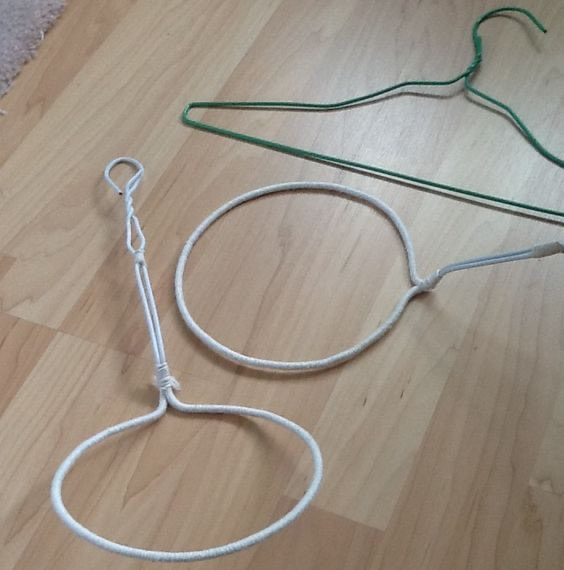Who doesn't like bubbles especially when you can make them yourself!
What is our theme? Homemade bubble wands with homemade bubbles.
What is the lesson (overall purpose)?
I want the children to explore using household items to create something special that we usually have to buy at the store.
help children to identify the problem, brainstorm solutions, and agree on one solution.
MA Guidelines/Standards:
Prek-PS1-4 (MA): Recognize through investigation that physical objects and materials can change under different circumstances (changing state)
W.PK.1: Children can tell you words to express their opinion about a topic.
Learning Outcomes:
help children to identify the problem, brainstorm solutions, and agree on one solution.
Songs, Books & Videos (Motivational Techniques)
Pictures of homemade bubble wands posted below!
Materials:
-Bubbles
4 cups warm water
½ cup dish soap
½ sugar
1 cup measuring cup
½ cup measuring cup
Large bowl
Whisk
-Wands
Pipe cleaners
An old wire hanger
Beads
Cookie cutters
*All of these items and more can be used to make bubble wands!
Activity (Procedure):
-Bubbles
Whisk the sugar into the warm water until the sugar dissolves.
Add the dish soap and whisk to combine.
This step is only if you have some patience or think to make the solution ahead of time. Letting the homemade bubbles sit for a couple of hours or even overnight helps them work a bit better, but is not strictly necessary.
-Wands
Bend wire or pipe cleaner into your desired shape add beads if you would like.
Dip the top of the wand into bubbles and hold out for the wind to catch it or blow!
Activity Wrap Up:
How do I know what my child is learning? (Assessment)
Ask open ended questions and observe. Is your child noticing how the sugar dissolves into the warm water? Why do you think that happened?
How can you extend this activity? (Modifications)
You can also add 1/4 cup of vegetable glycerine to your homemade bubble solution if you like (available from the drugstore or online). And/or 1/2 cup of corn starch. And/or 1 tablespoon of baking powder. Those each make the bubbles work just a tad better. But this is the basic recipe and it works just fine on it’s own.
Helpful Hints: (Pitfalls & Solutions)
If you don't have anything to make a bubble wand with you can try any household item that has holes the bubbles can go in. A strainer, spatula etc.
What is our theme? Homemade bubble wands with homemade bubbles.
What is the lesson (overall purpose)?
I want the children to explore using household items to create something special that we usually have to buy at the store.
help children to identify the problem, brainstorm solutions, and agree on one solution.
MA Guidelines/Standards:
Prek-PS1-4 (MA): Recognize through investigation that physical objects and materials can change under different circumstances (changing state)
W.PK.1: Children can tell you words to express their opinion about a topic.
Learning Outcomes:
help children to identify the problem, brainstorm solutions, and agree on one solution.
Songs, Books & Videos (Motivational Techniques)
Pictures of homemade bubble wands posted below!
Materials:
-Bubbles
4 cups warm water
½ cup dish soap
½ sugar
1 cup measuring cup
½ cup measuring cup
Large bowl
Whisk
-Wands
Pipe cleaners
An old wire hanger
Beads
Cookie cutters
*All of these items and more can be used to make bubble wands!
Activity (Procedure):
-Bubbles
Whisk the sugar into the warm water until the sugar dissolves.
Add the dish soap and whisk to combine.
This step is only if you have some patience or think to make the solution ahead of time. Letting the homemade bubbles sit for a couple of hours or even overnight helps them work a bit better, but is not strictly necessary.
-Wands
Bend wire or pipe cleaner into your desired shape add beads if you would like.
Dip the top of the wand into bubbles and hold out for the wind to catch it or blow!
Activity Wrap Up:
- ask reflective questions as children are engaged in activities, such as “What happened when ___? What did you think would happen?”
- help children connect their plans with implementation (e.g., “You planned to ___, how did it work out?”).
How do I know what my child is learning? (Assessment)
Ask open ended questions and observe. Is your child noticing how the sugar dissolves into the warm water? Why do you think that happened?
How can you extend this activity? (Modifications)
You can also add 1/4 cup of vegetable glycerine to your homemade bubble solution if you like (available from the drugstore or online). And/or 1/2 cup of corn starch. And/or 1 tablespoon of baking powder. Those each make the bubbles work just a tad better. But this is the basic recipe and it works just fine on it’s own.
Helpful Hints: (Pitfalls & Solutions)
If you don't have anything to make a bubble wand with you can try any household item that has holes the bubbles can go in. A strainer, spatula etc.



 RSS Feed
RSS Feed
